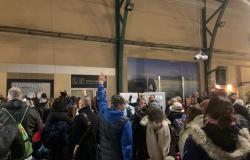
Par
Isabelle Villy
Published on
Nov. 2 2024 at 5:26 p.m
See my news
Follow 76actu
Be careful if you regularly use the road to Vascoeuilwhich crosses Héronchelles (Seine-Maritime). Between the end of October and the beginning of November 2024, priority changes will be effective at the four intersections which cross the village.
No longer will any road have priority and stop signs will be affixed to each road. The reason for this change is simple: secure the crossing of the villagewhich is experiencing growing traffic.
“Everyone is driving too fast! »
“Cars, trucks, motorcycles… everyone is driving too fast. This is not a new problem and in Héronchelles, this subject has been raised since 2014,” recalls Mayor Jean-Luc Poyen.
Suffice it to say that it took time before things moved and it was in 2023 that concrete progress finally took place.
This Vascoeuil road is very busy and there are even more and more people passing through, including heavy goods vehicles, in increasing numbers. To avoid crossing Rouen, they leave the highway and end up on country roads.
Securing pedestrians and hikers
And for the elected official, the situation could not continue: “We must think about the safety of pedestrians, of schoolchildren who use school buses. We also have many hikers who use this route. It is therefore essential everyone be safe», argues Jean-Luc Poyen.
The mayor is considering, in the future, a project for a path reserved for pedestrians: “But that obviously wouldn't be right away. It’s a project that will require a lot of time and also money,” he notes.
Inventory with the Roads Department and the gendarmerie
In the meantime, a visit took place in the presence of Julie Duhamel (Roads Department) and Chief Warrant Officer Martine of the Buchy gendarmerie, to take stock of the situation and think about solutions.
The road management was, for its part, not very favorable to the addition of stop signs. “The argument is that people weren't going to stop at the stop sign, but just slide over it. But in any case, it is always better to have a Stop than nothing at all,” argued the elected official, joined in this reasoning by the commander of the Buchy gendarmerie brigade.
Where will the stop signs be placed?
All crossroads on the Vascoeuil road, which cross Héronchelles, are affected, namely:
. Route de Bois-Guilbert and the RD 261.
. Church road and the small street.
. Route du Mesnil-Jean, route de la Forêt, route de la Gloe.
. Vascoeuil road and Lemont road.
Obligation to stop, wherever you come from
As a result, all roads arriving at the four intersections of the Vascoeuil road will now have a Stop sign. It will be like this obligatory to stopregardless of where you come from. “It is the person who arrives first at the intersection, who will be able to restart after having respected the stop. And then, you also need courtesy while driving,” says Jean-Luc Poyen.
Limited speed in built-up areas
These changes in priority are accompanied by speed limits when crossing the village and to do this, the boundaries of the municipality have been extended to make all crossroads as secure as possible.
Thus, in built-up areas, two maximum authorized speeds will be applied, namely 30 and 50 km/h and outside built-up areas, the speed cannot exceed 70 km/h. “This will also be an additional opportunity, by going slower, to enjoy the beauty of the Héronchelles valley,” smiles the mayor.
Follow all the news from your favorite cities and media by subscribing to Mon Actu.





